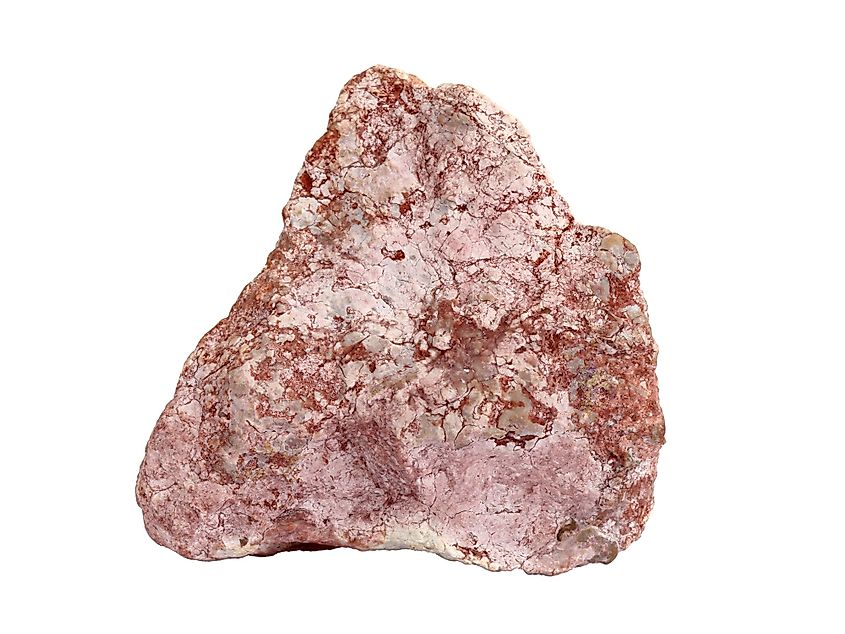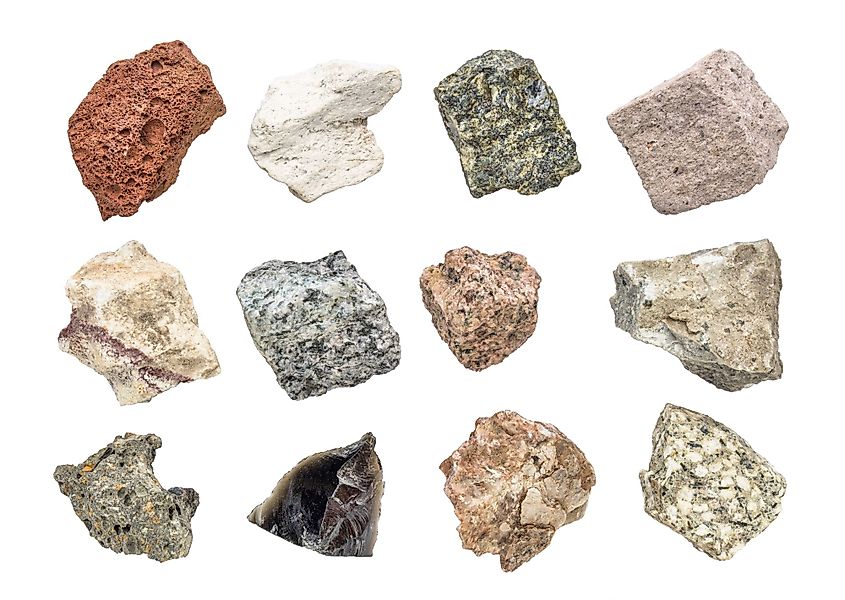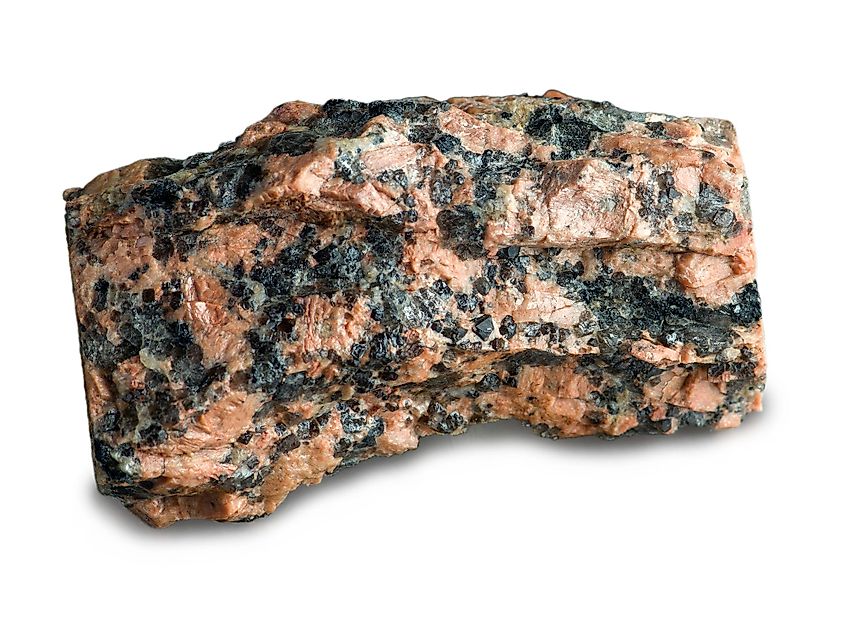
The 3 Types Of Rocks
Sedimentary, igneous, and metamorphic rocks are the three different types of rocks that make up all the rocks on Earth. Every form of rock has unique characteristics and is created uniquely. Each of these rocks is the product of physical processes that are a component of the rock cycle, such as melting, cooling, eroding, compacting, or deforming. See what the various types of rocks look like by learning about these types of rocks in the article below.
Sedimentary Rocks

Pre-existing rocks or fragments of extinct species serve as the building blocks for sedimentary rocks. They develop from deposits that build up on the surface of the Earth. Sedimentary rocks frequently exhibit recognizable bedding or layering. Sedimentation refers to a group of activities that cause organic or mineral particles to accumulate in one location. The particles that accumulate to form sedimentary rocks are known as sediments. They are estimated to encompass around 73% of the land area now present on Earth's surface. However, the overall volume of the crust that they contribute is just about 8%.
Classification Of Sedimentary Rocks
Clastic Sedimentary Rocks, Chemical Sedimentary Rocks, Biochemical Sedimentary Rocks, and Organic Sedimentary Rocks are the four main categories of sedimentary rocks.
Clastic Sedimentary Rocks

According to the sediment's grain size and the types of rock fragments that make up the sediment, clastic sedimentary rocks are divided into different categories. They develop due to the lithification and accumulation of mechanical weathering debris. Weathering, erosion, movement, deposition, and lithification are the five processes involved in producing clastic sediment and sedimentary rocks. A few examples are Breccia, conglomerate, sandstone, siltstone, and shale.
Chemical Sedimentary Rocks

When dissolved substances precipitate out of the solution, chemical sedimentary rocks are created. During the weathering process, dissolved ions are released into the water and are carried by streams or groundwater. These dispersed ions eventually wind up in the ocean, which explains why sea water is salty. The ions recombine via chemical precipitation to produce minerals that can aggregate to form chemical sediments and chemical sedimentary rocks when water evaporates or when the concentration of the ions becomes too high as a result of another process. Chert, some dolomites, flint, iron ore, limestones, and rock salt are a few examples.
Biochemical Sedimentary Rocks
Building biochemical sedimentary rocks use aquatic animal bodies and shells. The living things take chemicals out of the water and use them to make shells and other portions of their bodies. The ingredients include silica and the mineral aragonite, which is frequently used in place of calcite. Remember that biochemical and chemical sedimentary rocks are titled for their composition or the material they contain, as opposed to clastic rocks, which are named mostly for texture.
Organic Sedimentary Rocks

The accumulation of plant or animal waste leads to the formation of organic sedimentary rocks. They are derived from organic material that has been lithified and deposited, typically underwater. Plant and animals remain to serve as the starting point for the production of coal, oil, and methane, which are further changed via burial and heat (natural gas). Chalk, coal, diatomite, some dolomites, and some limestones are among the examples.
Characteristics Of Sedimentary Rocks
- Sedimentary rocks contain plant and animal fossils because they were created from sediments that were generated from older rocks, together with plant and animal remains.
- Sedimentary rocks can only be formed in areas where sediments have been dumped for enough time to become compressed and cemented into solid beds or strata.
- Despite being the most prevalent rocks visible on the surface of the Earth, they make up a very small portion of the crust.
- They are soft because sediments were deposited during their formation.
- The consolidated state of sedimentary rocks can range from excellent to poor to even unconsolidated. The types of minerals and cementing substances that make up the rocks determine the composition of the rocks.
Igneous Rocks

Igneous rocks, named after the Latin word for fire, are created when hot, molten rock crystallizes and solidifies. Near active plate borders or hot places, the melt begins its journey deep within the Earth before rising to the surface. In order to form igneous rocks, magma (molten rock) cools and crystallizes at volcanoes on the surface of the Earth or while it is still buried within the crust. Due to the extreme heat present in the upper mantle or lower crust, all magma forms underground. The composition of igneous rocks can vary greatly depending on the magma they cool from. Depending on their cooling circumstances, they may also have a varied appearance.
Classification Of Igneous Rocks
Depending on where the molten rock hardens, igneous rocks are classified as either intrusive or extrusive.
Intrusive Igneous Rocks

Intrusive, or plutonic, igneous rock is produced when lava remains within the Earth's crust, where it chills and hardens in chambers within the pre-existing rock. Most of the magma is held below, where it slowly cools over many thousands or millions of years before it hardens. On the surface of the Earth, some of the magma may cause volcanoes. They have sizable crystals that can typically be seen without the need for a microscope. The texture of this surface is known as phaneritic.
Extrusive Igneous Rocks

When hot magma rises to the surface and cools as lava, it forms extrusive, or volcanic, igneous rock. Lava cools quickly when exposed to the air's comparatively cool temperatures, which gives mineral crystals little time to develop. As a result, the texture of the rocks becomes extremely fine-grained or almost glassy. These are the kinds of rocks that are created by erupting volcanoes and gushing fissures. Small crystals form quickly inside solid volcanic rocks because they do not have much time to grow before the rock completely cools, which halts crystal growth. The name "aphanitic" for these fine-grained rocks comes from the Greek word for "invisible."
Characteristics Of Igneous Rocks
- Compared to sedimentary rocks, igneous rocks are much tougher and more resistant to high temperatures. Given that these rocks were created from hot, molten magma (625–1200° C), which occurs below the earth's surface, their resistance to severe heat is reasonable.
- The majority of igneous formations have several mineral deposits.
- Normally, they don't react with acids.
- They can be rough or glassy.
Metamorphic Rocks

With pressure, heat, and time, metamorphic rocks gradually transform into a different kind of rock. The extreme heat and/or pressure present in the Earth's crust caused metamorphic rocks, which were formerly igneous or sedimentary rocks, to transform. They have a crystalline texture that is frequently "squashed." A very particular set of circumstances must exist for a rock to undergo metamorphism. It is necessary to subject the preexisting rock to extreme temperatures, high pressures, or hot, mineral-rich fluids. All three of these conditions are typically true. The Earth's crust is where these conditions are most frequently encountered, either there or at plate borders when tectonic plates meet.
Classification Of Metamorphic Rocks
There are two main categories of metamorphic rocks: those that are foliated because they formed under conditions of directed pressure or shear stress, and those that aren't foliated because they did so under conditions of undirected pressure or pressure that was either very low or relatively close to the surface.
Foliated Metamorphic Rocks

Foliated metamorphic rocks have layers or stripes that result from the alignment and lengthening of the rock's minerals during metamorphism. When flat or elongated minerals within a rock are compressed and aligned, foliation is created. As pressure is applied, these rocks take on a platy or sheet-like structure that mirrors the pressure direction.
Non-Foliated Metamorphic Rocks

Because they frequently lack platy minerals like micas, non-foliated metamorphic rocks lack the foliated texture of foliated rocks. There are numerous methods for creating non-foliated rocks. Some rocks contain minerals that are not flat or elongated, such as limestone. Even with great pressure, the grains will not line up.
Characteristics Of Metamorphic Rocks
- Compared to the rocks they were produced from, metamorphic rocks are denser and less porous.
- Compared to the original rocks, they are rougher.
- Rarely has holes or pores.











